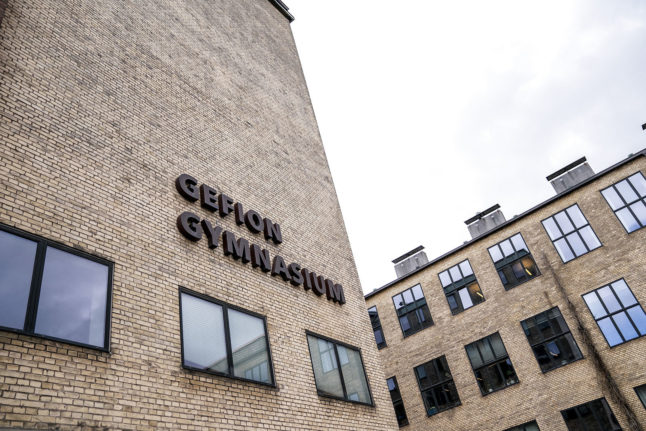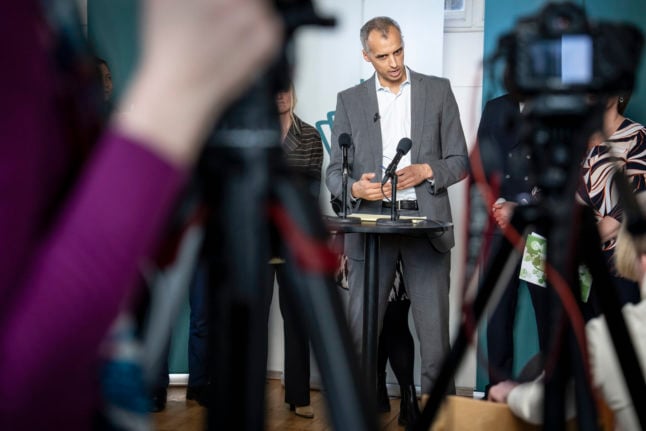Gymnasium is upper high school in Denmark and is similar to sixth form in the United Kingdom or senior high school in the US.
Parties behind the gymnasium agreement, which was made in June 2021, to change how students are allocated a place at upper high school, have agreed to tweak the model after criticism from the Social Liberal (Radikale Venstre) party.
Students in larger cities who don’t get a place at one of their four applied upper senior schools will now be allocated an alternative place based on transport time rather than it being a lottery (lodtrækning in Danish).
As part of the agreement, the transport time has been reduced from 60 minutes to a maximum of 45 minutes.
If there is no space for the student at a school within the prescribed 45-minute transport time, the region may increase the capacity of the school where the applicant will have the shortest transport time, the agreement states.
According to the Ministry of Children and Education, the change will give young people a greater chance of getting a place at their local high school and have a shorter distance to travel.
The government, the Socialist People’s Party, the Social Liberals, the Red-Green Alliance, the Alternative and the Christian Democrats are in agreement over the rule change, giving it a majority in parliament.
The new model for getting a place at gymnasium
In June 2021, a new agreement was made about how students were allocated a place at upper high school. This was to ensure smaller schools could be sustained and that those schools in the cities had a mix of students from different backgrounds. Students request a choice of four schools but they are then allocated based on criteria.
According to the agreed model, there are two categories for how admission is given; one for schools in and around cities and one for schools in less populated areas.
For students living in and around large cities, the application process will involve looking at the parents’ income, so students in each school come from a range of high, middle and low-income homes.
In the initial 2021 agreement, if there were too many students in an income group, they would be allocated a school by lottery. But now, if there are too many students in an income group, they will be allocated a school based on transport time.
For those students living outside cities, the transport time to the upper high school would be the factor assessed.
In addition, the largest upper high schools will have a tighter limit on how many students they can admit, while there will be minimum threshold for the number of students in small upper high schools. This is so all upper high schools will have at least three classes per year, corresponding to 84 students. Waiting lists will also be scrapped.
The agreement has been met with a mixed response. Kirsten Skov, principal at Marselisborg Gymnasium in Aarhus, told DR News that it is not fair on the students to not be guaranteed a place at their local gymnasium and potentially have to travel.
Ole Heinager, who heads several high schools in the west of Copenhagen was also against the plans.
“We really want a different composition of students. However, I doubt that it helps to send 30 percent of the students from [northern, affluent district, ed.] Gentofte down to us….There will be a cultural clash, because not all our students can afford to go out to lunch at a café every day. The problem here is that the algorithms do not take into account the human factor”, Heinager told TV 2 Lorry.
However the principal of Herlev Gymnasium, Jan Vistesen told DR News that the new model would ensure schools like his have a more even distribution of pupils from different backgrounds.
“We have 40 to 50 percent of students from ethnic backgrounds other than Danish, and that, we think, is too much”, he said, explaining that it was difficult to integrate the students of different backgrounds when there was such a high proportion of them in each class.
According to the ministry, 84 percent of all applicants will still get their first choice of upper high school, compared to 90 percent with the previous model.
The political agreement has become a bill, which was tabled on 31st March. It has not yet been adopted, but is scheduled to be considered in June and implemented in 2023/24.
Earlier this month, the right wing Danish People’s Party decided to leave talks over the agreement, saying it no longer supported the changes. This means that if there is a conservative majority after the next election, it is likely that the rules will be completely changed.



 Please whitelist us to continue reading.
Please whitelist us to continue reading.
Member comments